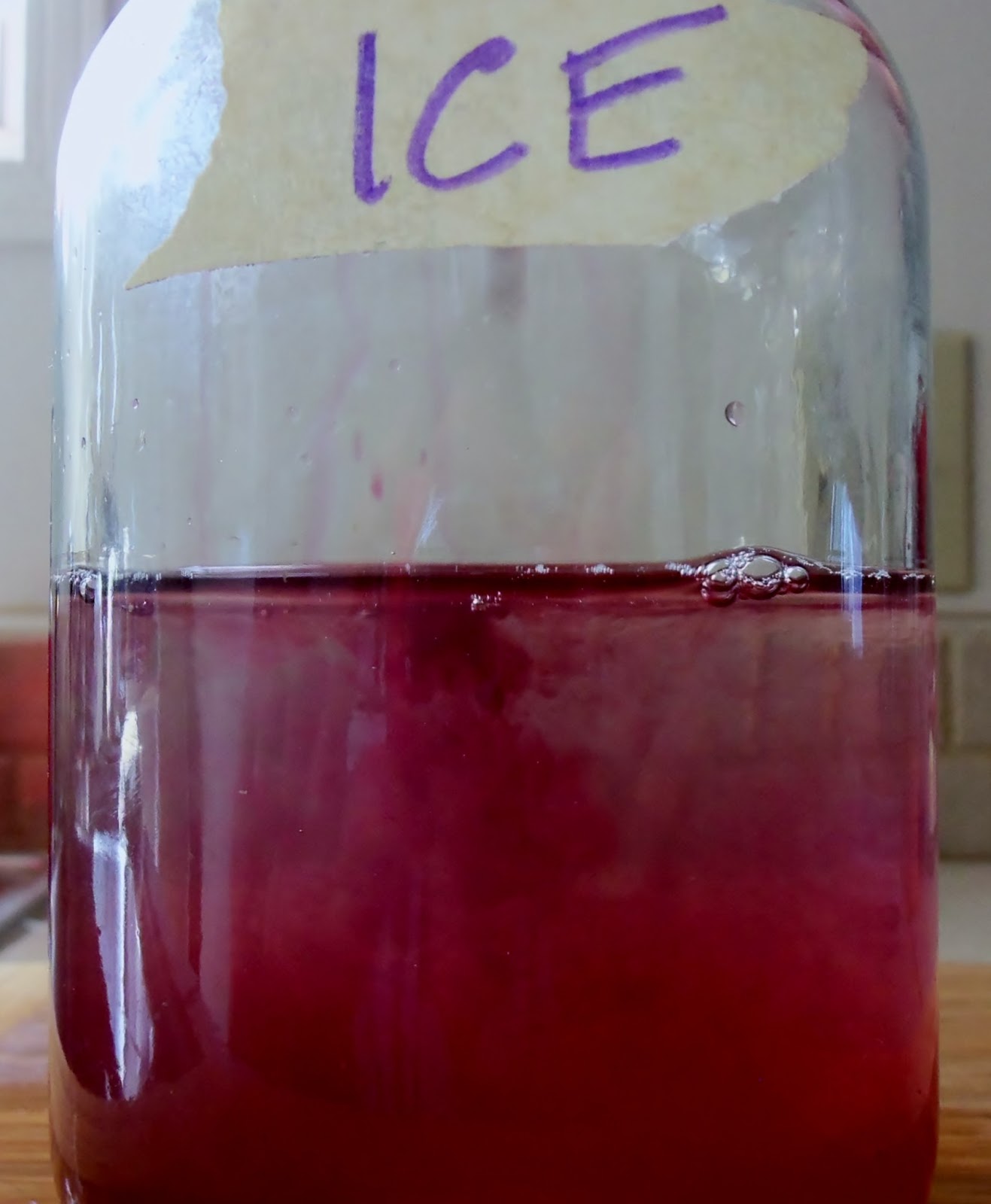KITCHEN LAB
MILK EXPERIMENT
Hypothesis: If I leave the milk in a war, dark spot for a few days,
then the milk will turn sour because it's slightly acidic.
 |
| DAY 1 |
Day 2: You can see here from
the image that the milk is thickening a bit by the proof of the slight ring
around the glass.
 |
| DAY 2 |
Day 3: As we can see now, the
milk has what you can call officially "clabbered," a term from the
Irish, which mean "to thicken," and can actually be considered a
"delicacy,"
 |
| DAY 3 |
Conclusion: By leaving the
milk out for a few days it allowed the acidity in the milk to increase and as
the milk turned thick, which in turn would typically allow "good
bacteria" to grow, but because this milk was pasteurized and not raw, the
good bacteria was killed off from the pasteurization process. Although once
refrigerated could still be good to use--although not in my book! Ha!
JUICE EXPERIMENT
Observations
Room Temperature Water:
When I poured the juice into the water at
room temperature, the molecules in the water caused the juice to break up very
slowly and distribute evenly. Maybe because there was more oxygen in the water,
the juice was slow to distribute evenly throughout the jar.
Ice Water:
With the juice poured into the ice
water, it appeared to distribute quicker, than with the room temperature water
and looks darker in color, although the water is much denser the colder it
gets.
The boiling water changed the color of
the juice to an almost purple bluish color.
The energy from the molecules in the boiling water was moving so fast that
when the juice hit the water, it also changed the color of the juice. Almost immediately distributed the juice evenly
throughout the jar.
CARROT EXPERIMENT
Hypothesis: If I put salt in the
water then place the carrot in the salt water for twenty four hours, the carrot
will shrink due to the salt solute because it's a hyper tonic solution and the
molecules in the salt water will dehydrate the carrot causing it to shrink.
Fresh water will make the carrot expand because the molecules in the water will
soak into the carrot to make it swell and would be considered a hypo tonic
solution.
Initial length and width of carrot pieces:
Piece 1-Salt: 4.45 length and 3.25 width
Piece 2-Fresh: 3.75 length and 3.25 width
 | ||||
| Beginning |
 | ||||
| 10 hours later |
After-experiment length and width of carrot pieces:
Piece 1-Salt:
3.75 length and 3.00 width
Piece 2-Fresh: 3.75 length and 3.25 width | |
| 24 hours later |









